Ottomans
and the
Entente:
The First World War in the Syrian and Lebanese Diaspora, 1908-1925 Stacy D. Fahrenthold
Visit to download the full and correct content document: https://ebookmass.com/product/between-the-ottomans-and-the-entente-the-first-world -war-in-the-syrian-and-lebanese-diaspora-1908-1925-stacy-d-fahrenthold/
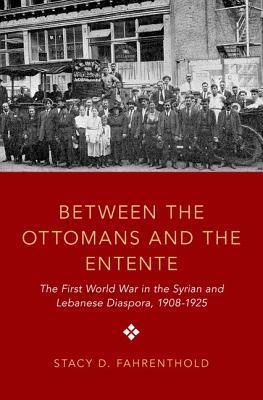
More products digital (pdf, epub, mobi) instant download maybe you interests ...

Women and the Lebanese Civil War : Female Fighters in Lebanese and Palestinian Militias 1st Edition Jennifer Philippa Eggert
https://ebookmass.com/product/women-and-the-lebanese-civil-warfemale-fighters-in-lebanese-and-palestinian-militias-1st-editionjennifer-philippa-eggert/
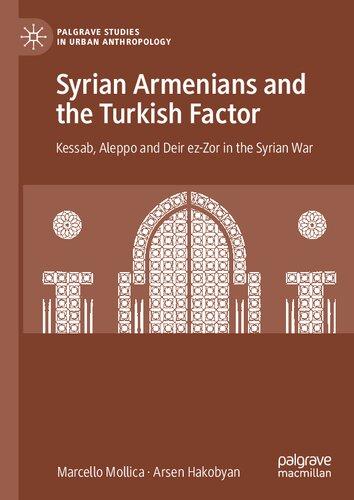
Syrian Armenians and the Turkish Factor: Kessab, Aleppo and Deir ez-Zor in the Syrian War 1st Edition Marcello Mollica
https://ebookmass.com/product/syrian-armenians-and-the-turkishfactor-kessab-aleppo-and-deir-ez-zor-in-the-syrian-war-1stedition-marcello-mollica/
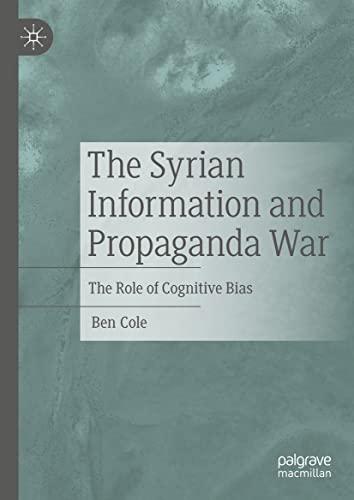
The Syrian Information and Propaganda War: The Role of Cognitive Bias Ben Cole
https://ebookmass.com/product/the-syrian-information-andpropaganda-war-the-role-of-cognitive-bias-ben-cole/
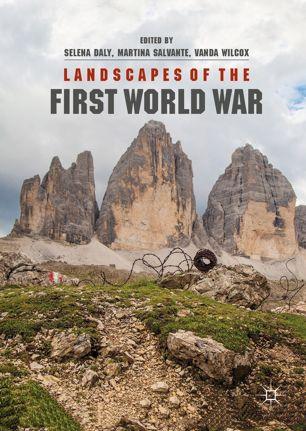
Landscapes of the First World War 1st ed. Edition
Selena Daly
https://ebookmass.com/product/landscapes-of-the-first-worldwar-1st-ed-edition-selena-daly/

A Supernatural War: Magic, Divination, And Faith During The First World War Owen Davies
https://ebookmass.com/product/a-supernatural-war-magicdivination-and-faith-during-the-first-world-war-owen-davies/
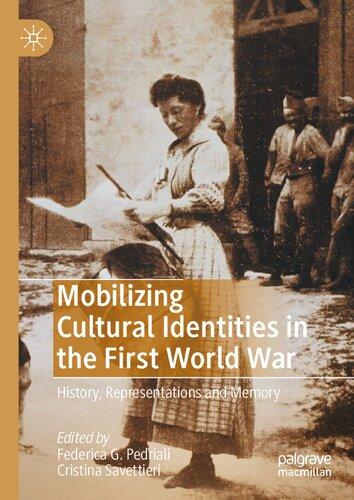
Mobilizing Cultural Identities in the First World War: History, Representations and Memory Federica Pedriali
https://ebookmass.com/product/mobilizing-cultural-identities-inthe-first-world-war-history-representations-and-memory-federicapedriali/
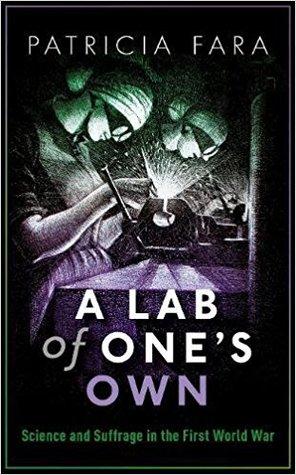
A Lab of One’s Own: Science and Suffrage in the First World War Patricia Fara
https://ebookmass.com/product/a-lab-of-ones-own-science-andsuffrage-in-the-first-world-war-patricia-fara/
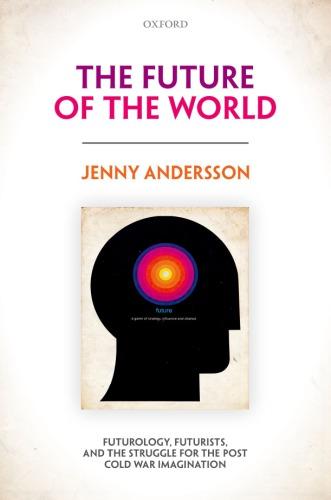
The future of the world: futurology, futurists, and the struggle for the post-Cold War imagination First Edition Andersson
https://ebookmass.com/product/the-future-of-the-world-futurologyfuturists-and-the-struggle-for-the-post-cold-war-imaginationfirst-edition-andersson/

The Heroic Age: The Creation of Quantum Mechanics, 1925–1940 Robert D. Purrington
https://ebookmass.com/product/the-heroic-age-the-creation-ofquantum-mechanics-1925-1940-robert-d-purrington/
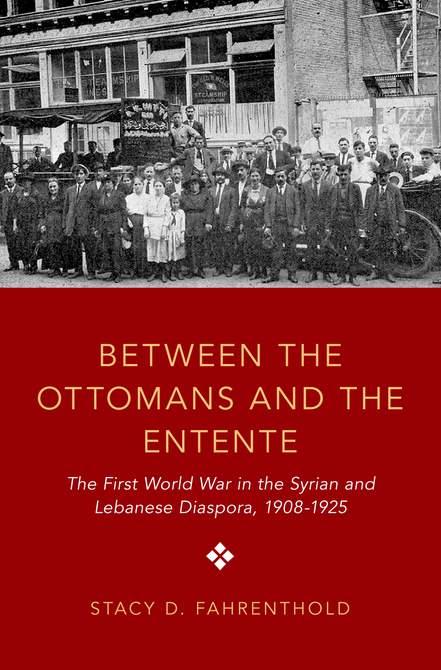
Between the Ottomans and the Entente
Between the Ottomans and the Entente
The First World War in the Syrian and Lebanese Diaspora, 1908– 1925
STACY D. FAHRENTHOLD
Oxford University Press is a department of the University of Oxford. It furthers the University’s objective of excellence in research, scholarship, and education by publishing worldwide. Oxford is a registered trade mark of Oxford University Press in the UK and certain other countries.
Published in the United States of America by Oxford University Press 198 Madison Avenue, New York, NY 10016, United States of America.
© Oxford University Press 2019
All rights reserved. No part of this publication may be reproduced, stored in a retrieval system, or transmitted, in any form or by any means, without the prior permission in writing of Oxford University Press, or as expressly permitted by law, by license, or under terms agreed with the appropriate reproduction rights organization. Inquiries concerning reproduction outside the scope of the above should be sent to the Rights Department, Oxford University Press, at the address above.
You must not circulate this work in any other form and you must impose this same condition on any acquirer.
Library of Congress Cataloging-in-Publication Data
Names: Fahrenthold, Stacy D., author.
Title: Between the Ottomans and the Entente : the first World War in the Syrian and Lebanese diaspora, 1908–1925 / Stacy D. Fahrenthold.
Description: New York, NY, United States of America : Oxford University Press, 2019. | Includes bibliographical references and index.
Identifiers: LCCN 2018039929 (print) | LCCN 2018046277 (ebook) | ISBN 9780190872144 (Updf) | ISBN 9780190872151 (Epub) | ISBN 9780190872137 (hardcover :alk. paper)
Subjects: LCSH: Syrians—Foreign countries. | Syria—Emigration and immigration. | Lebanese—Foreign countries. | Lebanon—Emigration and immigration. | World War, 1914–1918—Refugees.
Classification: LCC DS94.7 (ebook) | LCC DS94.7 .F34 2019 (print) | DDC 940.3089/9275691—dc23
LC record available at https://lccn.loc.gov/2018039929
1 3 5 7 9 8 6 4 2
Printed by Sheridan Books, Inc., United States of America
Portions of Chapter 3 appear in Stacy D. Fahrenthold, “Former Ottomans in the ranks: pro-Entente military recruitment among Syrians in the Americas, 1916–1918,” Journal of Global History 11, no. 1 (2016), 88–112.
For Martha
CONTENTS
Acknowledgments ix
A Note on Transliteration xiii
Abbreviations, Dramatis Personae, and Key Terms xv
Introduction: Between the Ottomans and the Entente 1
1 Mashriq and Mahjar: A Global History of Syrian Migration to the Americas 14
2 The Mahjar of the Young Turks, 1908–1916 31
3 Former Ottomans in the Ranks: Pro-Entente Military Recruitment in the Syrian Mahjar, 1916–1918 57
4 New Syrians Abroad: An Émigré Project for a United States Mandate in Syria, 1918–1920 85
5 Travelling Syrians, Immovable Turks: Passport Fraud and Migrant Smuggling at the Close of Empire, 1918–1920 112
6 Mandating the Mahjar: The French Mandate and Greater Lebanon’s Census of 1921 137
Conclusion 160
Notes 169
Index 203
ACKNOWLEDGMENTS
Access to a quality public education saved my life and is the primary social mobility driver for American young people. The research presented in this book was made possible by countless contributions, large and small, by public institutions and the people who make them work. I owe so many people my heartfelt thanks, but in this moment of cruel financial austerity it feels appropriate to begin by demonstrating how deeply my research is indebted to the investments public institutions make in young scholars and their ideas. Thank you to Phoenix High School, an alternative school in the Gwinnett County public system in Georgia, for providing second-chancers a shot at a first-rate education. Thank you to Sherry Fowler for pushing your students to go to college and for offering your time, your ear, and sometimes your home to young people who would otherwise go without. Georgia State University gave me room to write, to struggle, and sometimes to fail, and Georgia’s HOPE Scholarship and federal Pell grants made my education possible. Public funding for graduate education—language training, travel grants, and tuition waivers—helped my research on Syrian migration find its footing. Now, as a professor, I work to help my students find a toehold in an environment marked by mounting hostility to the public institutions they depend on. Whatever contribution this book makes to the literature on Middle Eastern migrations is extra, so long as it exemplifies the educational generosity I have enjoyed all these years.
And many people have been so generous with me. As a graduate student at Northeastern University, I was privileged to be among excellent scholars, gracious colleagues, and some of the best people I have ever met. Ilham KhuriMakdisi is as brilliant an advisor as she is a scholar, mentor, and friend. Thank you to Akram Fouad Khater, Laura Frader, and Isa Blumi for providing me abundant, meaningful guidance for this project, first as a dissertation project and then, as a book manuscript. The history department’s globally minded scholars made Northeastern a wonderful place to be and to work. I am especially grateful
for Katherine Luongo, Anthony Penna, Christina Gilmartin, and Philip Thai. In Boston, I was privileged to prepare for comprehensives with Philip S. Khoury’s help, a debt I may never be able to repay. Thank you to Shakir Mustafa, Samira Risheh, and Aref Arnous for your time and friendship, and for the intensive work and patience you exercised as I struggled to improve my Arabic. My graduate cohort was also an enormous source of strength: hundreds of cups of coffee were spent working on drafts with Ross Newton, Rachel Moloshok, and Victoria Hallinan. They each taught me how to write and, more importantly, when to stop writing. Rachel Gillett, Sana Tannoury Karam, Akin Sefer, and Burleigh Hendrickson each influenced how I think about networks in social history. Tara Dixon, James Bradford, Ethan Hawkley, and Malcolm Purinton challenged what I thought I knew about commodities and circuits of exchange. And Feruza Aripova, Regina Katzyulina, and Elizabeth Lehr generously assisted me with these chapters.
At Williams College, I was given valuable time to revise with the benefit of comments and insights by Sara Dubow, Jessica Chapman, Eiko Siniawer, Carmen Whalen, Scott Wong, and Magnus Bernhardsson. Julia Kowalski, Saadia Yacoob, Zaid Adhami, and Doug Kiel made my time in the Berkshires especially enjoyable, and I will never forget our pedagogical conversations. Thank you all. At University of California, Berkeley, my gratitude goes to Emily Gottreich, Lydia Kiesling, Christine Philliou, and Amber Zambelli for welcoming me as a visiting scholar at the Center for Middle Eastern Studies. At California State University Fresno, Lori Clune, Ethan Kytle, and Blain Roberts helped me navigate some critical stages of the publication process; additional thanks to Michelle Denbeste and Frederik Vermote for your continuing friendship and support. At California State University Stanislaus, my thanks go to Brandon Wolfe-Hunnicutt, who has been an engaging interlocutor in this project’s final stages.
Mahjar studies is more than a research field; it is also a community, thanks to a culture of free and open collaboration among scholars working across Middle Eastern, Latin American, North American, and global scales of study. I jokingly call the group the mahjar mafia, but contrary to the name’s connotations, I have found scholars in this subfield to be exceptionally generous with one another. Additional thanks to Akram Khater for his tireless work organizing biennial paper workshops at the Khayrallah Center for Lebanese Diaspora Studies at North Carolina State University. At those workshops and many others, I was repeatedly astounded by the brilliance of a company of scholars who inhabit this particular migration subfield. To Işıl Acehan, Charlotte Karem Albrecht, Andrew Arsan, Isa Blumi, Jennifer Dueck, Ted Falk, Sarah Gualtieri, Sally Howell, Steven Hyland, John Tofik Karam, Simon Jackson, Christine Lindner, Neda Maghbouleh, Amy Malek, Jacob Norris, Camila Pastor, Graham Pitts, Laura Robson, Vladimir Hamid-Troyansky, and Benjamin Thomas White, thank
you for all our conversations over the years. To each of you (and anyone I left out), I look forward to the next ones. Among the mahjar mafia, I am especially grateful for close friends who critique my drafts and who daily remind me of who I want to be as a scholar: Reem Bailony, Lily Balloffet, Lauren Banko, and Devi Mays. I was fortunate to have Uğur Pece and Omar Duwaji help me locate some of the portraits contained within. Sandrine Mansour and Armen ManukKhaloyan also provided crucial archival support. Thank you all.
Interactions with the amazing scholars studying the First World War in the Middle East also enriched my professional development. These scholars pushed me out of my migration comfort zone to consider the multiple ways in which the Ottoman Empire and its French Mandatory successor treated the Syrian mahjar as an offshore frontier province. Special thanks go to Mustafa Aksakal and Elizabeth Thompson for including me in their 2014 NEH summer seminar on World War I in the Middle East at Georgetown University. Thanks, too, to friends and collaborators from that World War I boot camp, especially Annia Ciezadlo, Priya Dixit, Mari Firkatian, Aimee Genell, Dominique Reill, Chris Rominger, Melanie S. Tanielian, and İpek Yosmaoğlu. Among Ottomanists, I would like to thank Lale Can, David Gutman, Janet Klein, Chris Lowe, Elyse Semerdjian, and Sherry Vatter for their insights and feedback on various papers. I am grateful to have had readers within the Syrian Studies Association who were kind in their assessment of this work when it was at the dissertation stage, including Charles Wilkins, Laura Ruiz de Elvira Carrascal, Hasan Kayalı, Stephennie Mulder, Lorenzo Trombetta, and Tina Zintl. Finally, there are always scholars with whom we collaborate without ever meeting. My thanks to AbdulKarim Rafeq for supporting this project when it was an ill-fated 2011–2012 trip to Damascus, and to William Gervase Clarence- Smith for inspired correspondence at critical turns.
My time at the Lebanese Emigration Research Center (LERC) at the Notre Dame University in Lebanon was exceptionally fruitful because of the hard work that Guita Hourani, Liliane Haddad, Elie Nabhan, and Eugen Sensenig put into that archive. LERC recaptures global Lebanese histories into an unparalleled collection of digitally accessible materials, which makes it a fantastic place to visit, but it was Guita, Elie, Liliane, and Eugen who also made it feel like home. My deepest thanks go to Riad Khuniesser and the staff at the Jafet Library at the American University of Beirut; to Ibrahim Assi at the Center des Archives Nationals in Beirut; to Sami Salameh at the Maronite Patriarchate in Bkerke; to Matthew Stiffler, Kirsten Terry, and Elyssa Bisoski at the Arab American National Museum in Dearborn, Michigan; and to Daniel Necas, Donna Gabaccia, and Haven Hawley for their assistance with collections at the Immigration History Research Center archives in Minneapolis, Minnesota. I have been privileged to sound out and refine these ideas at several workshops. I am especially grateful
for constructive audiences at the Khayrallah Center for Lebanese Diaspora Studies at North Carolina State University (2012, 2015, and 2017); the Mashriq in the Age of Late Imperialism workshop at Princeton University (2013); the Lines of Identity workshop at University of Manitoba (2015); and the Western Ottomanists’ Workshop at the University of California Berkeley (2016).
The work presented here has also been made possible by numerous grants, fellowships, and awards, including the National Endowment for the Humanities Summer Seminar grant; the Mellon Postdoctoral Fellowship at Williams College; the American Council of Learned Societies/Mellon Dissertation Completion Fellowship; the Syrian Studies Association dissertation award; the Immigration History Research Center Grant-in-Aid; and travel grants from CSU Stanislaus College of the Arts, Humanities, and Social Sciences; CSU Fresno College of Social Sciences; the University of California, Berkeley Center for Middle Eastern Studies; and the Khayrallah Center for Lebanese Diaspora Studies at North Carolina State University.
Thank you to my grandparents, Martha and David Burton, for always being at the ready with a kind word and a cup of black coffee; to Mara for long walks in the woods; and to my husband, David Schultz, who daily reminds me to step out of my work for a good meal, a good show, and a good sunrise or sunset. My thanks are due, finally, to my editor at Oxford University Press, Susan Ferber, whose incredible and efficient labor has made the publication process so streamlined and enjoyable. I have also benefitted mightily from impressive and thorough interventions by two anonymous reviewers, who constructively helped me ready this work for publication. Thank you. Any errors that remain within are, of course, entirely my own.
A NOTE ON TRANSLITERATION
Arabic and Ottoman Turkish words are transliterated according to the simplified system employed by the International Journal of Middle East Studies. Although Arabic diacritics have been omitted, ʿayns and hamzas have been retained. Ottoman Turkish diacritics have been retained.
ABBREVIATIONS, DRAMATIS PERSONAE, AND KEY TERMS
Organizations
AL Hizb al-Ittihad al-Lubnani (Alliance Libanaise). Established in Cairo in 1909. Branches in Argentina, Brazil, Chile, Mexico, Cuba, and the United States. Originally affiliated with the Ottoman Decentralization Party, but promoted Lebanese independence during the war. Endorsed a French Mandate for Greater Lebanon in 1919, a controversial decision that led the party’s president, Iskandar ‘Ammun, to resign and its Latin American chapters to splinter into a rival party, Hizb al-Tahalluf al-Lubnani.
CCS Comité Central Syrien (al-Lajna al- Suriyya al-Markaziyya). Established in Paris in 1916 by Shukri Ghanim and Georges Samné. Subsidized by the French Foreign Ministry as an advocacy network for Syrian émigrés. Organized war relief, humanitarian aid, and military recruitment across the mahjar, including a 1917 diasporic tour by CCS partisans Qaysar Lakah and Jamil Mardam Bey. A primary instrument of Franco- Syrian soft diplomacy during the war, but eclipsed by the French Foreign Ministry’s commitment to a Greater Lebanese state in 1919. Official organ: Correspondance d’Orient
CUP Committee of Union and Progress (Ittihat ve Terakki Cemiyeti). Ruling party of the Ottoman Empire following the 1908 Young Turk Revolution.
FDNP Free Democratic Nationalist Party (Hizb al-Dimuqrati al-Watani alHurr). Established in Buenos Aires in 1919 by Khalil Saʿadih. Hosted the 1919 General Syrian Congress in Buenos Aires. After 1920, its
headquarters transferred to São Paulo. Anticolonial, pro-independence, and Syrian unionist. Official organ: al-Majalla (Buenos Aires), al-Jarida (São Paulo).
HY Homsi Youth (Homs al-Fatat). Arab nationalist club established in São Paulo in 1915 by Jurj Atlas. Recruited Homsi men for pro-Entente military service. Official organ: al-Zahrawi. LLP Lebanon League of Progress (Jamʿiyyat al-Nahda al-Lubnaniyya).
Established in New York City in 1911 by Naʿum Mukarzil. Chapters in the United States, Canada, Mexico, Cuba, Chile, Argentina, and Brazil. Aligned with the Beirut Reform Society before 1914. Also aligned with the Cairo Alliance Libanaise, but was more forthrightly Francophile during the war. Processed military recruitment paperwork and French passports for Syrians abroad. Supported the French Mandate for Greater Lebanon. Official organs: al-Huda (New York) and Abu alHawl (São Paulo).
ODP Ottoman Decentralization Party (Hizb al-Lamarkaziyya al-Idariyya alʿUthmani). Established in Cairo in 1913. A loose coalition of societies seeking administrative reform in the Ottoman Arab provinces. Arabist organizations from Beirut, Jaffa, Damascus, and Basra (among others) organized under the ODP, as did the mahjari branches of Alliance Libanaise, al-Fatat, the United Syria Society, and the Lebanon League of Progress. One of the hosts of Paris 1913 Arab Congress.
NSNL New Syria National League (Jamʿiyyat Suriya al-Jadida al-Wataniyya).
Established in New York City and Boston in 1918. Chairman Jurj Ilyas Khayrallah. Executive members included Najeeb Saleeby, Faris Malouf, Fuad Shatara, Philip K. Hitti, and Abraham Mitrie Rihbany. Promoted independence for greater Syria and, in 1919, a United States Mandate in cooperation with the Arab nationalist movement. Aligned with Cairo’s Syrian Moderate Party and Buenos Aires’ Free Democratic Nationalist Party. Disbanded after 1920, but reemerged in Michigan in 1925 as the New Syria Party.
SAC Syrian American Club (al-Muntada al- Suri al-Amriki). Established in New York City and Boston in 1917. Assisted Syrian immigrants with the US naturalization petitions as well as US Army enlistment. Closely affiliated with the United Syria Society and the Comité Central Syrien during the war, and with the New Syria National League after 1918. Associated serials: al-Nasr (New York), Fatat Boston (Boston).
SLLL Syria-Mount Lebanon League of Liberation (Lajna al-Tahrir Suriya wa-Lubnan). Established in New York City in 1917 by Ayyub Tabet,
Amin al-Rihani, N. T. Tadross, Khalil Gibran, Ilya Abu Madi, Shukri al-Bakhash, and Najib Diyab. Affiliated with the Comité Central Syrien through 1919. Associated serials: al-Fatat, Mirat al-Gharb.
SLPS Syrian Lebanese Patriotic Society (Sociedade Patriótica Síria Libanesa). Established in São Paulo in 1917 by Naʿimi Jafet. Affiliated with the Comité Central Syrien until early 1919, and with the New Syria National League.
SOUS Syrian Ottoman Union Society (Jamʿiyyat al-Ittihad al- Suri alʿUthmani). Established in New York in 1908, a semi-official advocacy club aligned with the Committee of Union and Progress party and the Ottoman Empire’s consulate. After a series of disputes with the Ottoman consulate, it separated from the CUP hierarchy and changed its name to the United Syria Society (Jamʿiyyat al-Ittihad al- Suri) in late 1908. Also called the Syrian Union or Syrian American Association in English. Also aligned with the Syrian American Club and, during the war, with the Comité Central Syrien. Official organ: al-Kawn.
SPC Syrian Protestant College. Established in 1865 in Beirut; in 1920 its name changed to the American University of Beirut.
UMS Jamʿiyyat al-Ittihad al-Maruni (United Maronite Society). Established in New York City in 1921 by local clergy and Naʿum Mukarzil as a lay organization for Maronite political action. Acted as an early Chamber of Commerce linking Lebanese émigré commercial interests to historic Mount Lebanon.
Dramatis Personae
Emir Amin Arslan: b. Shwayfat (1868); d. Buenos Aires (1934). First and last Ottoman Consul General of Argentina (1910–1915). Partisan of the Syrian Union Society during the war. Critic of the French Mandate after 1920, author of La revolución siria contra el mandato francés (1926).
Jurj and Salwa Atlas: married in Homs and moved to São Paulo in 1914. Together they founded al-Karma (a literary serial), a girls’ school, and a young men’s fraternity, Homs al-Fatat. A pro-Hasmimite Arab nationalist, Jurj founded al-Zahrawi newspaper in 1916 and recruited Homsi men from Brazil for proEntente military service. Jurj Atlas established the São Paulo Homs Club (alNadi al-Homsi) in 1920.
Shukri al-Bakhash: b. Zahle (1889), d. Zahle. Partisan of the São Paulo Lebanon League of Progress in 1914, but by 1917 had moved to New York City. Editor
of New York City’s al-Fatat newspaper (1917–1919), enlisted in the US Army and served the War Department as a translator, propagandist, and recruiter. Executive committee of the Syria Mount Lebanon League of Liberation. Returned to Lebanon after 1920.
Mundji Bey: Ottoman charge d’affaires of New York City. Member of the CUP, and deposed Hamidian Ambassador Mehmed ʿAli Bey Abed in Washington, D.C. following the 1908 Young Turk Revolution. Served as interim ambassador before returning to New York. Sponsored the establishment of Syrian Ottoman Union Society of New York. Reassigned to London in 1909.
Najib Diyab: b. Roumieh, Mount Lebanon (1870); d. Brooklyn, New York (1936). Moved to New York in 1894, where he wrote for Kawkab Amrika before founding his own Mirat al- Gharb in 1899. Executive committee of Syrian Ottoman Union Society of New York (1908). Speaker at the First Arab Congress in Paris (1913). Executive committee of the Syria Mount Lebanon League of Liberation 1917–1919. Arab nationalist and critic of the French Mandate.
Shukri Ghanim: b. Beirut (1861); d. Paris (1929). Vice President on the First Arab Congress (1913). Founder/editor of La Correspondance d’Orient (1908), among others. Established the Comité Central Syrien with Georges Samné in 1916, and recruited Syrian men from the mahjar for the French Legion d’Orient through CCS. After 1918, supported a French Mandate for Greater Syria, a plan undermined by French sponsorship of an separate Greater Lebanon (Grand Liban).
Albert Hatem: b. Mount Lebanon 1894; d. 1981. Nephew of Naʿum Hatem, alHuda correspondent and Lebanon League of Progress partisan. Enlisted in the US Army in 1917, served as a recruiter. Promoted to sergeant and served as color guard at victory celebrations in early 1919. Discharged in May 1919.
Naʿimi Jafet: b. Shwayr, Mount Lebanon (1860), d. São Paulo (1923). Built one of Brazil’s largest cotton textile factories at Ypiranga in 1907. Established Brazil’s Syrian Chamber of Commerce and the Syrian Lebanese Patriotic Society in 1917. Founder of the Hospital Sírio-Libanês of São Paulo in 1921.
Jurj Ilyas Khayrallah: chairman of the New Syria National League of New York (1919). Advocated for a United States Mandate over Greater Syria in 1919 and a treaty of friendship between America and the Arab nationalist movement. Corresponded with Faris Nimr on these topics.
Bishop Shukrallah al-Khuri: Maronite bishop sent to America to conduct an administrative census of Maronite emigrants in the Americas. Installed in Our Lady of Lebanon in Brooklyn, al-Khuri collected population data and information about Maronite clergy, ritual, and practice in 1921–1922. Some of his data
was included in the Lebanese Census of 1921 but also laid the foundation for the Maronite Church’s reorganization in the mahjar after the war.
Shukri al-Khuri: Founder/editor of São Paulo’s Abu al-Hawl/ Espinghe (1906). Established the São Paulo Lebanon League of Progress (1912), which declared war on the Ottoman Empire (against the wishes of the party’s New York headquarters) in 1914. Lebanist and Pro-French Mandate after 1918.
Jurj Ibrahim Maʿtuq (George Abraham Matook): b. Boston, Massachusetts (1896); d. Berwyn, Illinois (1957). Drafted in 1917 and deployed to France with the 101st Engineer Corps, where he worked as an interpreter. Sponsored Syrian leatherworkers enlisting in the US army, and corresponded with the Syrian American Club of Boston and Wadiʿ Shakir while deployed. Worked in industrial laundry after he was decommissioned in 1919.
Naʿum Mukarzil: b. Freike, Mount Lebanon (1864); d. Paris (1932). Established al-Huda newspaper in 1898; by 1905, it was the largest Arabic language daily in the United States. In New York City, founded the Lebanon League of Progress (1911) and attended the First Arab Congress (1913). Recruited for the French Legion d’Orient and US Army during the war. Promoted a French Mandate for Greater Lebanon (Grand Liban) after 1918. Partisan of the United Maronite Society of New York.
Rev. Abraham Mitrie Rihbany: b. Shwayr, Mount Lebanon (1869); d. Stamford, Connecticut (1944). Presbyterian minister educated at the Syrian Protestant College in Beirut before emigrating to New York City in 1897. Briefly edited Kawkab Amrika before taking on work as an advocate, social worker, and theologian. Raised humanitarian relief during the war, and wrote in favor of US trusteeship over Greater Syria. In 1919, appointed the New Syria National League’s delegate to the Paris Peace Conference but was denied entry to its proceedings. Aligned with Hashimite Arab nationalism and anti-Zionism, critical of the French Mandate.
Dr. Khalil Saʿadih: b. Shwayr, Mount Lebanon (1857); d. São Paulo (1934). Graduated from Syrian Protestant College (1883); after emigrating to Egypt, moved to Buenos Aires (1914) and São Paulo (1919). Established serials alMajalla (Buenos Aires), al-Jarida (São Paulo), and al-Rabita (São Paulo), among others. Member of the Syrian Masonic Society, and founder of the Free Democratic Nationalist Party in Argentina (1919). Pro-independence and host of the 1919 General Syrian Congress of Buenos Aires.
Najib Sawaya: editor of al-Kawn newspaper in New York City (1907–1909). Executive committee of the Syrian Ottoman Union Society.
Wadiʿ Ilyas Shakir: b. 1895; d. Boston, Massachusetts (1955). President of the Syrian American Club of Boston and aligned with the New Syria National League
in 1919. Assisted Syrian immigrants with naturalization petitions and migrant advocacy within the city. Married Hannah Sabbagh Shakir and maintained accounting books for Sabbagh Brothers cloth wholesaling.
Gabriel Ilyas Ward: b. Tripoli (c. 1869). Naturalized US citizen by virtue of his military service in the Philippines in 1898. Ward enlisted in the Canadian Expeditionary Forces in 1915, fought in France in 1916, and was wounded in a gas attack. He spent 1917–1918 in London working with the British military police, occasionally corresponding with al-Huda newspaper in New York. After he was decommissioned in 1919, he returned to New York, became a police officer, and published his memoirs, Kitab al-Jundi al-Suri fi-Thalath Hurub in 1919.
Key Terms
mahjar lands of emigration; refers to the physical space of the Arab diasporas.
Mashriq the eastern Mediterranean; refers to the Arab Levant, historic greater Syria including Palestine (bilad al-sham).
mutasarrifate Ottoman administrative subdivision of Mount Lebanon. Created by the 1861 Règlement Organique, the mutasarrifate structure guaranteed a degree of administrative autonomy for Mount Lebanon backed by European diplomatic pressure. After 1908 the Committee of Union and Progress government sought to reform and centralize its structures, ultimately abolishing it in 1914.
nahda renaissance; refers to the late nineteenth-century Arabic literary revival usually credited to Syrian and Lebanese writers in Egypt writing in the private press. Also associated with Arabic prose, poetry, and social critique (especially of liberal, secular, or radical leanings) in the Arab mahjar in the Americas c. 1900–1920s.
sauf conduit safe conduct passports; ad hoc travel documents granted to foreign nationals, refugees, displaced persons, or prisoners of war to facilitate cross-border travel or to grant diplomatic protection to migrants of uncertain nationality status.
Between the Ottomans and the Entente
Introduction
Between the Ottomans and the Entente
The trouble in the Syrian colony of Buenos Aires began on April 12, 1915, outside the Ottoman Empire’s consulate on Avenida Corrientes. On that day, the city’s Ottoman General Consul, a Syrian emir named Amin Arslan, met a crowd of one thousand Syrian migrants on the steps of his office. Although an Ottoman official working for the Committee of Union and Progress (hereafter CUP) government, Arslan was an outspoken opponent of Istanbul’s alliance with Germany, a strategic maneuver that had brought the empire into the First World War in October 1914. Arslan spent the months since the declaration of war speaking out against his government’s alliance with Berlin. Arslan’s popularity among the Syrians of Argentina soared, but the city’s German consulate resented his disloyal behavior and reported Arslan to his superiors in the Ottoman Foreign Ministry. Istanbul was already uneasy with Amin Arslan: the consul’s open friendship with French diplomats in Argentina, seen as a major boon for the Empire a decade earlier, was no longer seen as such in 1914. The ruling Ottoman triumvirate—Enver, Talaat, and Cemal Pashas—began to see the Argentinian emir as a liability. They also saw the Syrian mahjar (lands of emigration, often translated as diaspora) as a dangerous place, its half million emigrants full of potential for sedition, collusion with the Empire’s enemies, and recruitment to the Arabist opposition mounting against Unionist rule.
In April 1915, the embattled Ottoman consul received a letter from the Germans, invoking the Berlin-Istanbul alliance and ordering Arslan to stop defaming Germany. The letter demanded that Arslan cease all contact with the French consulate and refrain from public statements about the war in the Argentinian press. Finding it absurd that he should take orders from Germany, Arslan marched up the steps outside of the Ottoman Consulate building on that April day. Meeting a crowd of Syrians, Lebanese, Palestinians, and other Ottoman nationals from the Argentine colony, Arslan read Germany’s threatening letter
aloud, tipping off a day of Arabist protest against the Unionist government and its involvement in the First World War.1 Arslan then read a letter he penned in response to the German consul general in Buenos Aires:
Señor Consul General, I have the pleasure of acknowledging your letter . . . I think it goes without saying how surprising this letter was, as its contents conflict with all established diplomatic protocol, and it has not come to my earnest attention that my Ottoman Empire forms a mere part of your German Imperium. And I keep hope, nevertheless, for the honor and dignity of my poor country, dragged unwillingly into the abyss of this war by you, a savage foreign power.2
Lamenting that “the interests of the [Syrian] community are now in the hands of foreigners,” 3 Amin Arslan reaffirmed his loyalty “to my august sovereign, the Sultan . . . and my only superior, the Grand Vizier (Talaat Pasha).” 4 He announced that he had written Talaat Pasha to demand that Istanbul either renounce its alliance with Germany or terminate him from Ottoman diplomatic service.
Fire him they did. Receiving more complaints from the Germans, Talaat Pasha relieved Arslan of his post via telegram on May 19, 1915 and ordered the closure of the empire’s Buenos Aires consulate.5 Arslan was instructed to deliver the contents of his office’s archives to the German consulate and to return immediately to Istanbul.6 Seeing this course of events as further proof the Unionists had become German puppets, Arslan closed the consulate but refused to surrender its papers. “These documents provide legal protection and justice [for Syrians] in this country,” he explained to La Prensa newspaper. “No foreigner has the right to take and oversee the files of Ottomans [living in Argentina], nor to determine the interests of my countrymen, who . . . have an interest in defending what is rightfully theirs.” 7 If the Germans came for the records, he threatened he would submit them to Argentina’s supreme court for protection. Istanbul responded by convicting the impudent emir of treason in absentia. He would never be allowed to return to the Ottoman domain.8
South American newspapers noticed the Syrian protests against the Ottoman Empire’s entry into the First World War, especially in Brazil and Argentina, where hundreds of thousands of Syrian migrants already lived. Both countries were then formally neutral in the war but were allied with the Triple Entente. The Syrian protests against their own sovereign grabbed public attention, fed a wider anti-German sentiment, and turned Arslan into a local champion. The Argentinian press called Germany’s takeover of Ottoman affairs an “act of piracy.”9 Brazilian papers congratulated “the Consul of the Turkish colony [colonia
turca] for so energetically opposing the pretentions of a foreign monarchic regime.”10 But the Latin American public remained unaware of Arslan’s reasons for refusing to surrender his consulate’s archives, papers that documented the citizenship claims, migration status, political activities, and intelligence files for an estimated 110,000 Syrians in Argentina. Arslan was convinced the records would be used to levy criminal charges against Syrian emigrants, or even those who had returned to the Ottoman empire.11
Arslan’s fears were well warranted. Only weeks before, Syria’s Ottoman governor-general, Cemal Pasha, ordered Ottoman troops to seize records from Beirut’s abandoned French Consulate, using them to indict and convict dozens of Arabists, reformers, and Syrian elites of treason.12 The gallows went up in Syria, and over forty men were hanged en masse in Damascus and Beirut between August 1915 and May 1916.13 Their crimes originated with their ties to foreign powers and connections to Arabist émigré associations. Only those who fled the empire escaped this fate; like Arslan, they could only be convicted in absentia.14
The Ottomans had not always seen the mahjar as dangerous. For a time, this diaspora represented an overseas frontier, a source of economic development, its emigrants a useful population to be groomed and reclaimed through diplomacy. The new Ottoman consulates had themselves been a manifestation of that mission. But under the shifting politics of the First World War and Cemal Pasha’s repression of Arabism at home, the state’s view of the mahjar shifted: it became a site for sedition, opposition to CUP rule, and collusion with the empire’s enemies. This book recounts that transition. It is about the empire’s momentary embrace of Ottoman migrants and the emergence of a political society organized across the mahjar’s major colonies in Brazil, Argentina, and the United States. It is about the breakdown of Ottoman control over migrant activism in the war’s early months, the result of an ill-fated alliance with Berlin and a crackdown on civil society. It is about the various means that Syrian and Lebanese migrants abroad had at their disposal to protest and rebel against the Ottoman state, and the readiness of the Entente powers to ally with these émigré activists. Ultimately, this book explores how this diaspora’s uneasy entanglement with the forces of European imperialism shaped the political fate of its Middle Eastern homeland.
Writing the Mahjar Back into Syrian History
Until now, the story of the First World War in the Syrian mahjar had fallen into a historical ellipsis, a curious silence produced by a rift in available archives and the distinct preoccupations of two separate historiographies: migration history,
on the one hand, and Ottoman histories of the war, on the other. A recent flowering of writing on the war has demonstrated the Ottoman Empire’s centrality to the conflict, which experienced it not as four years of devastation but as over a decade of revolution, disintegration, and reassertion from the Young Turks of 1908 through Turkish independence in 1923. Employing Ottoman state records from Istanbul, Jerusalem, and elsewhere, Ottomanist scholars argue that the war reshaped the modern Middle East, not only by tearing down the Ottoman state and inviting European colonialism into the region but through intimate, lived experiences of occupation, conscription, famine, and genocide. Although this historiography has effectively narrated the war from an Ottoman perspective, its focus on metropolitan centers, the seats of government, and the imperial state itself means that the half million Ottoman subjects who lived beyond the imperial domain continue to be hidden from this retelling. Much of this elision, moreover, is a consequence of the empire’s wartime efforts to forcefully disengage with the diasporas during the crisis.15
In recovering the Ottoman experience of the war, questions about the relationship of peoples to territorial spaces predominate: mobilization, displacement, and conscription, on one hand, and ecological disasters, famine, and epidemic, on the other.16 This book similarly examines state-society relations, but by taking the perspective of Ottoman Arabs outside the empire during the conflict as opposed to those suddenly displaced by it, this work also questions the territoriality of the war itself. Although it is conceptually hazardous to draw sharp distinctions between them, this book is about migrants rather than about refugees.17 But migration has the capacity to transform how states function even if it is not directly compelled by conflict or systemic displacement. States manage wartime migration in a number of ways. In addition to the production of refugees, this work analyzes the regulation/restriction of travelers, the extraterritorial assertion of state sovereignty over diasporas, the politics of migrant naturalization and denationalization, and the inclusion (or exclusion) of migrants from nationality protections and, by extension, from the most basic infrastructural elements of the state.
Ottomanist historiography has also successfully made the wartime imperial state an object of analysis.18 But pursuing the war as social experience lived, survived, and endured by Ottoman subjects as individuals also requires the integration of informal archives. Migrant activists conducted intelligence for the Entente, produced anti-Ottoman propaganda, managed smuggling networks, and recruited for armies at war with Istanbul. These activities were clandestine by definition. To the extent that Ottoman officialdom captured this at all, state records documenting activities in the Syrian mahjar were contradictory and incomplete because the activists involved evaded the attentions of the state
where possible. Thus, this study also utilizes private papers, diaries, personal correspondence, and club records from the Syrian mahjar as well as the daily reporting of the Arabic periodical press.
Syrian migrants inhabit the margins of Ottomanist historiography by virtue of its territorial focus and framing, but an entirely different kind of bookending occurs in migration histories of Syria and Lebanon. In mahjar studies, the First World War falls between two core periods: the late Ottoman mahjar before 1914, and the diaspora’s relationship to the French Mandate after 1920. Histories of the mahjar before 1914 describe a soft Ottoman frontier zone, a site for the nahda (renaissance) as evidenced by the vibrant print cultures of Cairo, New York City, São Paulo, and elsewhere. Their guiding questions have been shaped by the concerns of a rising Arab middle class at the turn of the twentieth century, the population best represented in these periodicals.19 By contrast, scholars working on the interwar mahjar draw upon the papers of the French Mandate, the League of Nations, or the Permanent Mandates Commission and consequently have focused principally on the role the diaspora played in sustaining, repatriating to, or protesting against the French administration in Syria and Lebanon. Working through Syrian petitions to the League of Nations or the French High Commissioner’s office in Beirut, these scholars uncover new facets of mahjari politics and their links to colonialism: were the emigrants colonial middlemen, for instance?20 Were they developmentalists working with France to build a new Lebanon?21 Were they a policy challenge for French administrators managing other colonies in the French Empire? Was the mahjar a site for political contest, revolt, or anticolonial revolution?22
Scholarship on the interwar mahjar makes clear that this diaspora presented a specific blend of opportunities and obstacles for the French Mandate, but the origins of these dense transnational entanglements remain murky in histories focused primarily on French imperialism and its discontents. Drawing on new bodies of archival materials and on personal documents written by and between Syrian activists during the First World War, this study links the prewar Ottoman mahjar to the postwar French Mandate. It examines politics and activism among Syrians abroad from the 1908 Young Turk Revolution through the French Mandate’s first five years (1920–1925), with a particular focus on the wartime work of Syrian, Lebanese, and Arab nationalists who believed that collaborating with the Entente powers would lead to their homeland’s liberation from Ottoman suzerainty and, eventually, to independence. It uncovers some brand-new means of Syrian collaboration and questions the roots of the mahjar’s entanglements with foreign powers. Ultimately, it complicates persistent images of the Syrian diaspora as complicit with (or complacent about) foreign colonialism in the Middle East.
Pursuing Migrants Across Archival Regimes
Writing the history of the wartime Syrian mahjar requires careful recognition of the ways that war simultaneously compels and impedes migration across borders. The First World War followed on the heels of several decades of unprecedented international labor migration, the “first wave globalization” of the late nineteenth century (1880–1914).23 The deepening structures of global capitalism compelled new proletarians to move around the world, facilitated by new modes of transportation—steamships and railroads—that carried workers farther afield than ever before. The trans-Atlantic corridor carried millions of Mediterranean workers to meet the needs of rapidly expanding agricultural and industrial sectors of the post-abolition Americas. So, too, came Ottoman Arabs from Syria, Mount Lebanon, and Palestine, mostly (but by no means exclusively) Christian, of peasant and working-class stock. The lion’s share of the half million Syrians who emigrated between 1880 and 1914 concentrated in the three largest settler societies in the Atlantic world: Brazil (107,000), Argentina (110,000), and the United States (100,000), with smaller communities in Canada, Mexico, Chile, Ecuador, Cuba, Haiti, and elsewhere.24
As these migrants moved, they left a paper trail of passports, entry papers, legal declarations, quarantine and arrest records, as well as personal correspondence, diaries, memoirs, and printed materials such as serial newspapers, dime novels, political broadsides, and poetry. Departing migrants were processed first at the port in Beirut, where anxious Ottoman authorities frequently discussed Syrian emigration as a problem but infrequently attempted to police it.25 After stops in Egypt or at port cities in Mediterranean Europe, those Syrians who made it “beyond the seas” typically arrived in New York City, Buenos Aires, or Rio de Janeiro, although others soon appeared in Havana, Port Au Prince, or the land border between Mexico and the United States. Confronting immigration officials, the new arrivals were subject to routine questions but also non-routine investigation, detainment, and quarantine. Whether admitted or rejected upon arrival, each interaction generated a documentary footprint, but only some of them can be captured through the formal archives of any single receiving state. Histories of the Syrian mahjar have thus been refracted through the disciplinary approaches of Middle Eastern, Latin American, and American ethnic studies. Through this rich empirical work, historians can now follow Syrian migrants across multiple archival regimes and, where necessary, across disciplines. This book sets out to accomplish that by placing Syrian migrants at the fore, reconstructing their routes, the social geographies of mahjari communities that were interconnected, and the transnational scope of mahjari activism by using documents from four continents.
The pursuit of migrants means activists and their networks are examined at both microhistorical and transnational levels. Although migrant politics and particularly the politics of diasporic nationalism emerge from this study, the study does not analyze nationalism as an ideology or project targeting a carefully delineated homeland. During the period under investigation, Syrian activists had yet to coherently work out the ideological stuff of nationalism: irredentist historical narratives; claims to nationhood on ethnic, linguistic, confessional lines; or even the borders that a post-Ottoman Syria would take.26 An abundance of such ideas floated around in the mahjar, in the press, and among activists organizing in political committees in the eastern Mediterranean, but these ideologies proved to be flexible and transformed readily when confronted the pragmatic demands of wartime activism. If any moment hardened their projects into firmer nationalist programs, it was after the armistice with the 1919 Paris Peace Conference and its demand that petitioners be uniformly representative of their community’s national aspirations.27
Rather than analyzing protonationalist ideas or representations in the mahjar, it is more fruitful to target wartime migrant politics, not through sentiments but through action. Syrianists, Lebanists, and Arabists competed, engaged in sabotage, and routinely called each other traitors (often while secretly collaborating in war work), but there was a remarkable degree of consensus among them regarding the means and ends of their work. All of the activists discussed here came to believe that Syria must be liberated from Ottoman rule, that migrants abroad were obligated to work toward that goal, and that the best means of accomplishing this was through cooperating with the Entente Powers.28 Some of these activists left Syria as late as 1913. Others had lived abroad for decades, and more were born in the mahjar, had never been Ottoman nationals, and had never been to Syria. Such distinctions mattered little, because these activists believed they were constructing a post-Ottoman community composed not only of Syrians (or Lebanese, Palestinians, or Arab nationalists) living in the homeland but also spanning the entire diaspora. Mahjari activists carried these assumptions with them as they engaged in transnational political work, recruited for the army, petitioned foreign leaders, sought repatriation to the homeland, and registered with the census. The assumption that the diaspora was responsible for liberating its homeland is reflected in the shape and scope of the mahjar’s press but also in its ethnic associations, political clubs, and fraternities—organizations whose records form the core of this research.
At the center of this diaspora’s politics sat the production and circulation of specific sorts of papers: periodicals, propaganda, passports, and petitions. Borrowing from the nahda-era periodicals of Cairo and Alexandria of the late nineteenth century, Arabic print culture boomed in the Americas after 1900.
